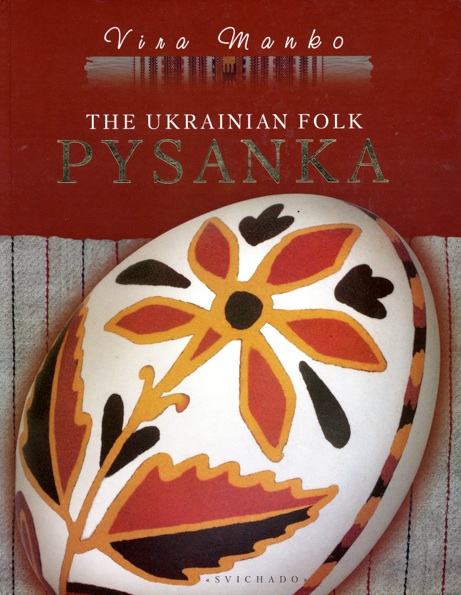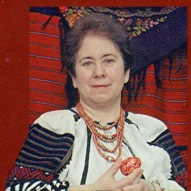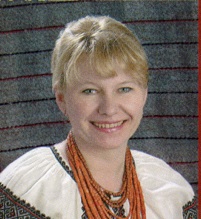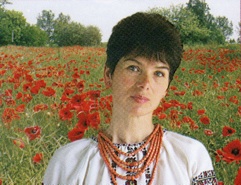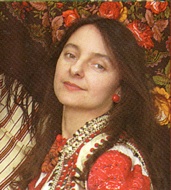
The Ukrainian Folk Pysanka
Author: Vira Manko
Edition: 1st (English)
Format: Hardcover
Pages: 80
Language: English
Illustrations: numerous color, including 38 color plates
Publisher: “Svichado” (L’viv, 2005)
Availability: yes, online retailers
Acquired: Pysanka Museum, Kolomiya, Ukraine
ISBN: 966-8744-23-3
This exquisite book retails in Ukraine for about 65 hryvnia (about 8 USD), and is available in Ukrainian, English, French and German versions. It preserves the text of Vira Manko’s first (Ukrainian-language only) edition of the Ukrainian Folk Pysanka, which was well written and utilized many primary Ukrainian sources, and adds 38 pages of plates with color photos of 1461 folk pysanky.
The English version is, unlike many other books published in Ukraine, very well translated. The translator, Lada Bidiak, is a native English speaker, and it shows. Missing are the convoluted sentences, odd word usages and sometimes incomprehensible passages that plague so many other translated Ukrainian works.
In this book Vira Manko not only discusses the origins of the pysanka and its rituals, symbolism and techniques, but also includes a section about the history of the Ukrainian pysanka, including modern Ukrainian history (encompassing the decline of the art of pysanka under the Soviets and its eventual rebirth in an independent Ukraine).
The symbolism chapter, co-written with Marusyna Chaika, is wonderful, with a scholarly approach to the symbols found on Ukrainian pysanky and their meanings. The authors go beyond the usual simplistic heart = love, deer = prosperity, sun = god approach, and delve into the origins of the many symbols, and their various interpretations. This is probably one of the better sources (in English) on this complex but fascinating subject.

Examples of berehynia motifs
The book has been well translated for this second edition (the first was only available in Ukrainian), and, as noted, lots of plates have been added. These plates are the highlights of the book. The more than 1400 color photos in the 38 plates provide exemplars of pysanky from all the regions of Ukraine. The pysanky have been created by Vira and four fellow pysankary, including the late Taras Horodetsky.
The pysankary: (top) Vira Manko, Zoryana Hrehoriychuk, (center) Maria Yanko,
(bottom) Maryna Verkhova, Taras Horodetskiy
The plates includes samples of local embroidery1 for each region, and each of the pysanky is identified by name, region and village of origin (if known). These patterns have been collected from many sources–museum and private collections, ethnographic books and folios.
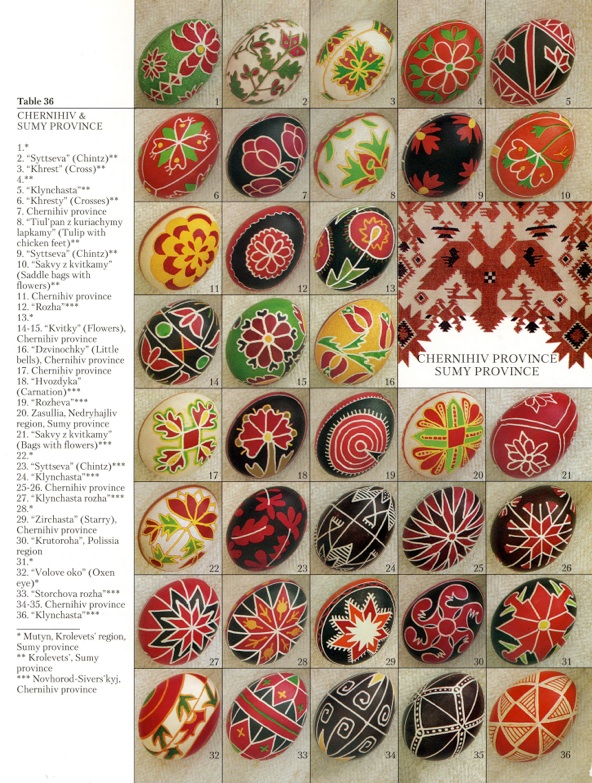
A plate of pysanky from northeastern Ukraine
This version of the book is hardcover; the original was a glossy Ukrainian-language paperback with many fewer photos. It is a must for any serious student of the pysanka, or anyone who simply appreciates traditional Ukrainian pysanky.
There are also Ukrainian, French, Polish and German versions of the book available (but not Russian). In 2007, the color plates were released in loose form in a folio; due to popular demand, the folio was re-printed in 2008 with a different title and cover. Either of these sets of plates is a valuable addition to any pysankar’s working library, as a supplement to, but not a replacement for, the full text version.
___________
-
1.The embroidery samples are also from Vira Manko's collections. She is fascinated by many aspects of Ukrainian folks arts, with an emphasis on the traditional Ukrainian pysanka.
Back to MAIN Pysanka Books home page.
Back to MAIN Books home page.
Back to Pysanka Bibliography.
Search my site with Google
